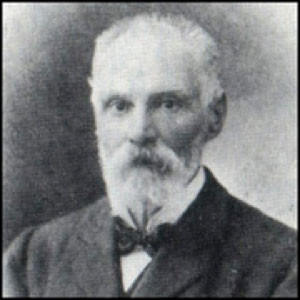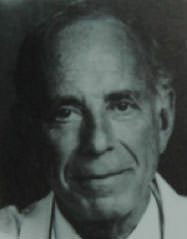Hernias are one of the most common anatomical derangements in men and women and has left an indelible mark throughout most of recorded history. The Egyptians (1500 BC), Phoenicians (900 BC) and Ancient Greeks (400 BC) all describe the diagnosis of hernia and various methods of treatment. Surgical intervention is described in ancient scripture as well as demonstrated in sculpture and other forms of record. The mummified remains of the pharaohs Merneptah (1215 BC) and Ramses V (1157 BC) suggest that both suffered from and were likely treated for groin (inguinal) hernia. The word hernia is derived from the Greek word hernios, a bud or shoot.
For hundreds of years various surgical and non-surgical treatments were offered to patients suffering from chronic pain, obstruction and strangulation related to their hernias. Many of the described surgical techniques included castration (removal of the testicle). Non-surgical methods consisted of bloodletting, tobacco enemas and special diets. Interestingly, trusses (compression device) were also described and used for non-complicated hernias as they still are today.
It wasn’t until the mid-1700s, the so called Age of Dissection, when surgical anatomists began to appreciate and understand the complexity of inguinal (groin) anatomy. Over the next century the great pioneers of hernia surgery developed an understanding of the various forms of hernia and the nature of how and why the form. Understanding form and function was the first major step in finding a solution to the problem.
Like most surgical procedures, hernia surgery did not become routinely practiced until the advent of perhaps the two greatest discoveries in Modern Medicine.
Aseptic Technique
The simple practice of routine hand washing before operating, demonstrated by Oliver Wendell Holmes and Semmelweis, markedly reduced the incidence of postoperative infection. At this time bacteria and their causal relationship with infection were unknown. Joseph Lister is credited with describing and practicing aseptic techniques and by doing so demonstrated that surgery could be performed with markedly reduced infections.
Anesthesia
The first demonstration of effective anesthesia occurred at Massachusetts General Hospital on October 16, 1846. Using sulfuric ether, Dr. William Thomas Green Morton, successfully removed a tumor from the neck of a man without any signs or suggestion of pain. With the ability to control and block pain from surgical procedures the age of Modern Surgery was born.
Dr. Edoardo Bassini (1844-1924) A number of pioneer surgeons described various methods for the surgical correction of hernia. However, one deserves particular recognition. Edoardo Bassini (1844-1924) was an Italian surgeon who not only described a durable inguinal hernia repair based on an understanding of inguinal (groin) anatomy and physiology but he also studied and followed his patients long-term to learn outcomes. Between 1883 and 1889, Bassini operated on 274 hernias. He collected data on 216 patients over almost 5 years. This prospective approach to surgical outcomes was novel idea at that time. He was able to identify 8 recurrences (4%) and 11 postoperative infections (5%). Over the next several decades various surgical methods have been developed and described by other giants in surgery such Marcy, Shouldice and Halsted.
The Shouldice clinic in Toronto opened in 1945 and has been practicing a technique that bears the same name. Similar in nature to the repair initially described by Bassini, the Shouldice clinic reports a 1% recurrence rate with very close follow up.
Dr. Edward Earle Shouldice (1890-1965) Over the previous century various techniques using a reinforcement material (mesh) to repair inguinal hernias had been described. In 1900s various forms of woven soft metal grafts were used and found to be unsatisfactory. In 1935 Wallace Carothers, a chemist at Dupont, discovered a method to create synthetic polymers and is credited with the creation of Nylon. The “era of plastics” was ushered in and other polymers like polyester and polypropylene were discovered and used in the manufacture of countless items including surgical mesh.
Starting in the 1940s various forms of synthetic polymers were used in inguinal hernia repair. By the 1960s, Dr Richard Newman had performed over 1600 inguinal hernia repairs using polypropylene. In 1987 Dr Irving Lichtenstein published the results of 6,321 patients followed for 2-14 years after inguinal hernias repair with Marlex (polypropylene) mesh. Lichtenstein reported a recurrence rate of 0.7 %. The technique bearing his name called for a “tensionless” repair and over time this has become a pillar of hernia surgery.
Dr. Irving Lichtenstein (1920-2000) The first laparoscopic inguinal hernia surgery was described in 1979 but it wasn’t until 1989 that a prosthetic mesh was used during laparoscopic hernia repair. Over the next decade various laparoscopic techniques were developed. Two techniques, TAPP and TEP, have become the most common techniques used today. The results of a multicenter laparoscopic inguinal hernia study was reported in 1998. The recurrence rate was 0.4% in 10,053 surgical repairs over an average of three year follow up.
The incidence of a person developing some type of hernia in their lifetime is approximately 10%. One million hernia repairs are performed annually in the United States. Approximately 750, 000 are inguinal hernia. Although the tenants of hernia repair appear to be well established, surgical technique continues to be refined in hopes of providing a repair with complete durability, minimal pain and elimination of infection and other potential complications.



